QuestionQUESTION: Good afternoon Ms. Patterson,
First of all, I love, love, LOVE your answers. They are so clear and concise that even an old women like me with "oldtimerz" can understand them!
Anyway, I have a 6 year old Arab gelding. Very laid back boy, but when you call up that energy, he can provide some mighty quick moves and some real happy feet. His currnet weight is 849 his height 15 to 15.1 I have to press slightly to feel ribs. He could stand another 50 pounds I think so that he goes into the winter months with some extra pounds on him. We trail ride once or twice a week between 3 and 6 hours. I school him three times a week in the arena between 30 minutes (if he gets it right early!) to an hour.
He is an easier keeper. In fact I have only had him on pasture the entire summer. The weather has been cooling, and I have started him back on Safe Starch, as I did last winter, as his main portion of his meal. I also supplement the safe starch four times a week with rice bran...about a "dry" pound. I also, when the weather really gets nasty provide him with alfalfa cubes, about 10 or 12 on top of the safe starch.
I have read your past answers and went to look up buckyeye feeds, as well as some of the supplements you spoke of. Since I board my Arab, I know the barn workers think it is a pain to mix the rice bran with water. So I am looking for something that is easy for them to deal with daily; as I can provided the mash when i go out in the evenings.
What are your recommendations? I feel sometimes the safe strach a few alfalfha cubes and rice bran are not enough. Even though, on the same diet last year, he was the only horse at the barn that looked good coming into spring. but I was the only one out there when it was 3 below feeding him extra forage. but still i feel as if I am missing something.
Thank you gor your time. I think it is very generous of you, and all the experts, to donate your time and wisdom....free of charge!
Sarah
ANSWER: Hi Sarah,
Thank you for the lovely compliment. Some people fear asking, knowing how long winded I can be :-)
Horses are homeotherms, meaning they need to maintain an almost constant body temperature. As temperatures change, a horse's metabolism must adjust to maintain it's thermal neutral zone (TNZ). In cold weather, metabolic heat production increases to maintain body temperature, altering resting metabolic rate. So in effect the body works harder to keep constant temperature, and in ultimately needs more energy (and related nutrients) with which to do this.
My favorite ingredient for providing this additional energy is good quality forage, and more specifically hay. Although hay is not the most energy dense of the ingredients available (meaning it technically does not make as many calories as grain might), it does provide some heat of digestion (the act of fermenting it creates additional heat plus energy). Low quality forages won't do the same thing, so avoid them or feed them in warmer weather. And expect your horse to eat considerably more in this time of year. If your horse is housed outside or in a cold barn in the winter, I think hay should be provided free choice (as well as some sort of wind shelter of course).
Other sources of energy would be starch and fat. Starch is quickly converted to energy so it provides an immediate source of calories. The only problem with using starch to keep horses warm is that some horses don't handle starch very well...and Arabians are notorious for that. Either the horse becomes too 'hot' from the sugar rush created in the system, or the starch ends up in the hind gut where it creates a set of metabolic disturbances. Fat provides more calories per gram but takes longer to convert to energy once consumed.
So what to feed, exactly, for your horse? I would start with feeding hay free choice, which is easy enough to do as long as you can convince barn staff of it. Because your horse is an arabian that can be a little hot, I would minimize the use of starch sources. By going with a high fat/high fibre feed, you can eliminate feeding the rice bran and the work that goes with preparing it. Which type of high fat/high fibre feed depends a lot on the body condition of your horse, and it could change throughout the winter. If you want him to gain some weight now, you should go with more of a performance version of that type of feed. So pick one that uses beet pulp as the fibre source and ideally an extruded vegetable fat source instead of just vegetable oil. An example of what I would use specifically would be Agribrands Purina's 'Evolution Elite'. If you let me know what company you would like to deal with, I would be happy to help you pick one.
Thank you again for your kind words,
Corlena
---------- FOLLOW-UP ----------
QUESTION: Hello again Corlena,
Thank you for the response. I need long winded in order to get all the facts in my head. Now you will have to put up with my reply from your answer.....<winks>.
I use the Triple Crown Safe Starch Forage as the main portion of his two daily meals. (It looks so good and smells so fresh all i need it some vinegarette and I would be set!) So instead of pounds of sweet feed, he gets four pounds of the Triple Crown Safe Starch Forage in the am and 4 pounds in the PM, with free choice hay the rest of the day. I also provide him fresh fruits when they are in season. He loves grapes (seedless of course), cantaloupes, honey dew, water melons, apples, and mangos which he took out of my hand while I was not paying attention.
I am lucky that he is an in your pocket little Arab. He is calm and cool. What is nice is when you want the speed all you have to do is ask! And, that is something I do not want to lose be feeding a highly sweet feed with lots of molasses or other sugars.
Since I am using the Triple Crown Safe Starch I can stay with them for the feed, if they have a good recipe. Or There is a Buckeye Feed place about 10 miles from my house, I could go there as well. Which ever you think is the best.
I do have another question; he is prone to skin aliments....what bothers him does not seem to phase the other horses at all. Last year it was greasy heel, this year is was something that looked like greasy heel but on the dock of his tail. In the Spring, the fist few inspect bites, drive him crazy until, or at least it seems, he becomes "immune" to the them. Is there something I can provide him in his diet that will help him at all? I am meticulous about his grooming knowing that clean skin is healthy skin. I do worry about bathing to much and stripping natural oils in his coat that may be needed. Any suggestions?
I think we need to see who can be more long winded!!! LOLOLOLOL....I do apologize, but you are a wealth of information and I plan on picking your brain!
Thank you again,
Sarah
AnswerHello again Sarah,
I've not had the privilege of working with Triple Crown as there are no suppliers in our area, but I certainly do like their formulations on paper. So if you like them, by all means stick with it. The safe starch is in effect a hay/pasture replacement that can allow you to more closely control forage quality. In your situation, instead of making up a combination of 'Safe Starch', alfalfa and rice bran , you can just use a little more of the safe starch. It already contains the rice bran, and uses grasses instead of alfalfa but to the same result. It would be easier for the barn staff to feed and as a result may encourage them to do so more religiously.
My favorite feed additive for improving coat and skin quality, and boosting the anti-inflammatory response (that you may need to fight with the bug bites) is milled flax. It helps make the skin more elastic, the hair shinier and your horse's system fight mild allergic type reactions. We can buy it here in a 25kg bag for a mere $25 and as a preventative feed 100-200grams/day (1-2 cups). It is flaxseed ground into a meal form with nothing added or removed. There are fancier versions of it on the market but I have found that the additional benefits they bring is not worth the larger price tag.
Thanks, Corlena

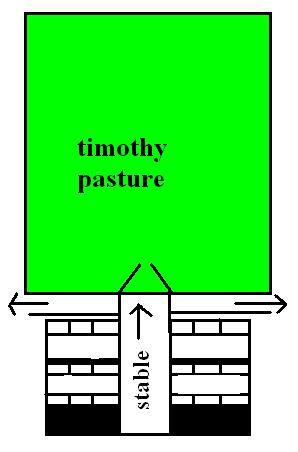 stables inside my pasture
Question
stables inside my past
hello maam, can i set l
stables inside my pasture
Question
stables inside my past
hello maam, can i set l
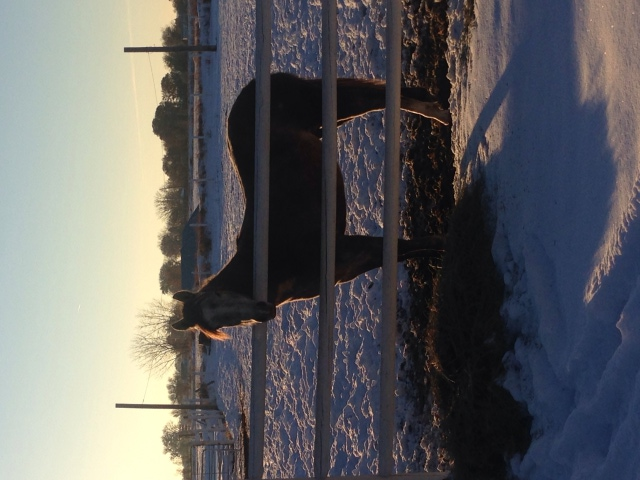 Feed for Growing Quarter Horses
Question
Bree Della
Hi! I have a two year
Feed for Growing Quarter Horses
Question
Bree Della
Hi! I have a two year
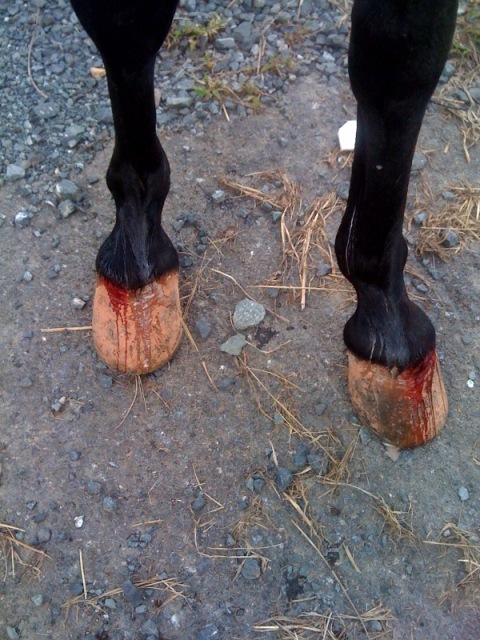 bleeding hooves
Question
bleeding
hi corlena! I have attached a photo s
bleeding hooves
Question
bleeding
hi corlena! I have attached a photo s
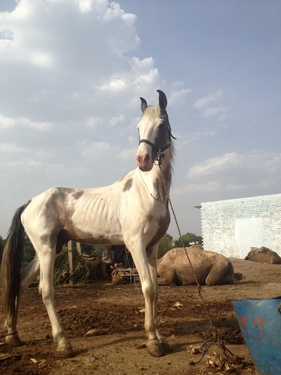 improving body condition
Question
horse
hello maam, how can i improve the
improving body condition
Question
horse
hello maam, how can i improve the
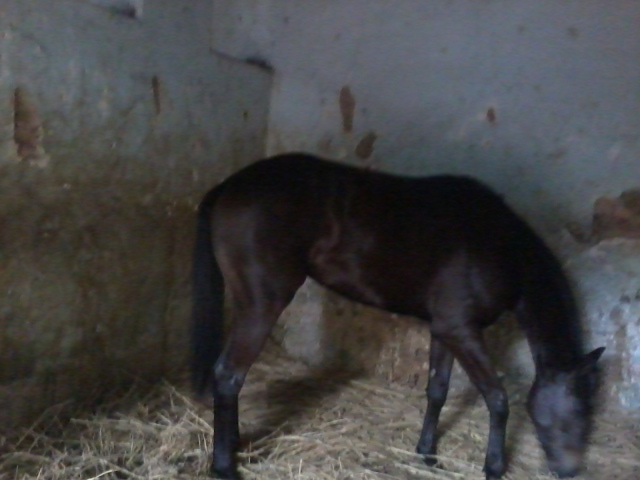 raw milk for under developed baby horses
Question
under developed
hello maam. top trainer
raw milk for under developed baby horses
Question
under developed
hello maam. top trainer